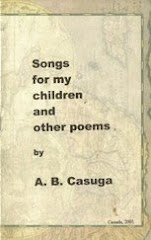24 March 2009
Critics follow writers
That critics follow writers is fairly obvious from the history of criticism. Plato and Aristotle came after Sophocles and company. Cleanth Brooks and the New Critics came after T.S. Eliot and company. Even the Hungarian Marxist critics wrote only about previous works. The Australian postcolonial critics came after the Nigerian novelists and company. It is, of course, a tautology to say that a critic has to have a literary text to criticize, which means that the writer must necessarily come before the critic. In the few cases when critics (such as the early Russian Marxists) tried to tell writers what to write and how to write, the results have been either disastrous or insignificant. No one in China, not even the diehard Maoists, would now consider the works of the Cultural Revolution as superior in quality to those written before or after. No one in Russia even mentions the works done during the Stalinist period. In the Philippines, only the anti-Spanish (and anti-Spanish teachers) works of the late 19th century remain in the literary canon; those that presumably followed the Spanish critics of the time have been so forgotten that they are not even mentioned in footnotes.
Posted by Isagani R. Cruz at 5:22 AM
Albert B. Casuga said...
Thank God for the writers. Without them, where would the critics be?
This is the reason for my advocating that a critic should be an artist (poet, playwright, fictionist, painter, etc.) first.
When the late Filipino poet Alejandrino G. Hufana fraternally consented to write an "Introduction" to my first collection of poems, "Narra Poems and Others" (1968), he wrote a rather lengthy analysis of the poetic well-springs of my poems. The archetypal approach he used was flattering. The mythology of a "poet's country is the inroad the poet permits his readers into his imagination," he said of my Narra, the landmark. But he pared his critic's razor and remained an artist, revelling at the "country," he likewise recognized.
Like most first collections, this one had structural problems, I realize that now, using a poet/critic's hindsight.
Hufana said, "It is the like structural problem that attracts and strains investigation of a work of imagination; the study is very often rewarding...for which there have been various constructs of criticism raised, and also obtruding critical jargons. We need not bother Casuga's present collection with all the encumbrances of study now. It may be that we are looking too overtly at the poems , when all we should do is to be reminded by Francis Thompson, the poet quoted by Casuga and with whom he has cetain affinities outside of the more applied qualities of T. S. Eliot; Thompson it was indeed who said: " 'Tis ye, 'tis your estranged faces,/ That miss the many splendored thing."
Hufana, as poet, did not give free rein to his critical eye. I suspect he wanted the younger writer to thrive and mature. No use for rapiers yet. Let him live, he must have benevolently muttered. He was an artist before he was a critic.
Lesson learned: The critic follows the writer. The rapiers will be there for some gory use later -- IF the writer does not live up to his sacred troth. -- ALBERT B. CASUGA
24 March, 2009 07:28
Pakistan and Afghanistan agree to maintain a ceasefire -- for now. Here's
what to know
-
Relations between the two neighbors hit a low point this month, with
fighting killing people on both sides of the border. At issue is a rise in
militancy i...
2 hours ago











No comments:
Post a Comment